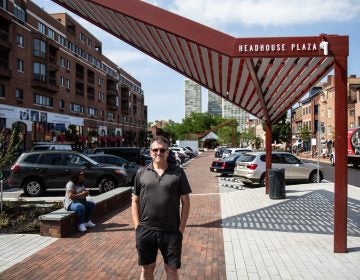Sensitivity and the search for common ground at Weccacoe Playground / Bethel Burying Ground
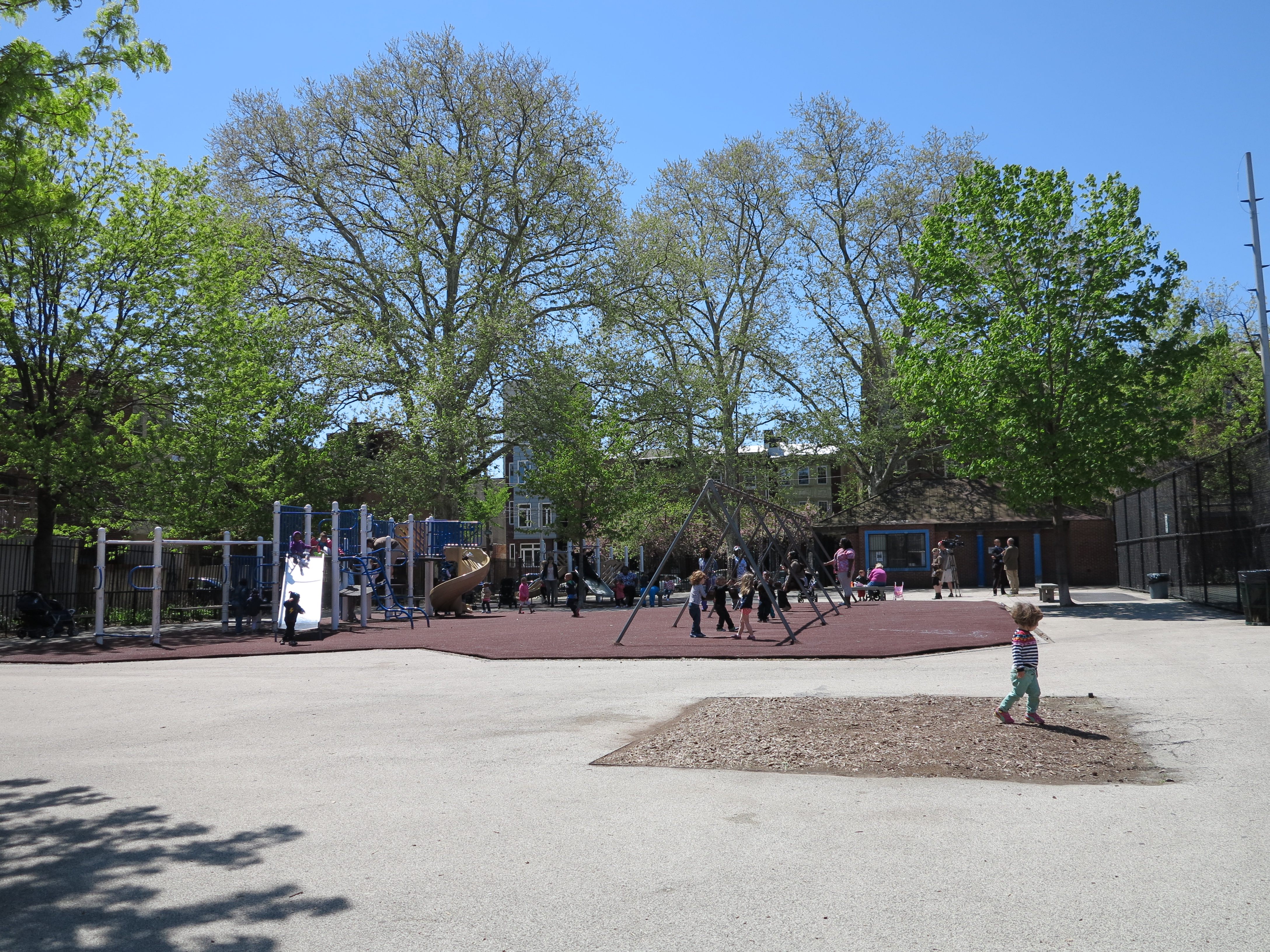
Each marker and memorial at the Bethel Burial Ground in Queen Village was intended to endure. But forever is a long time. Neighborhood kids have played at Weccacoe Playground, between Queen and Catharine, Lawrence and Leithgow streets – property that includes the burial ground site – for more than 100 years.
Can the remains of an important, historic cemetery coexist with a vital play space?
Friends of Weccacoe and the Department of Parks and Recreation hoped to embark on a playground improvement project, but that process has slowed to a crawl since confirmation that beneath Weccacoe could be the remains of up to 5,000 black Philadelphians.
The burial ground is the final resting place for the founding generations of Mother Bethel African Methodist Episcopal Church, interred from 1810 until the mid-1860s. It was the first privately owned burial ground established by and for black Philadelphians, and its association with Mother Bethel makes it especially significant. In 1889 the church sold the burial ground property to the City of Philadelphia, which turned the property into a public park and playground.
Now future of the site is in flux as conversations continue over ways to honor the site’s place in history, how to make it a quality public space.
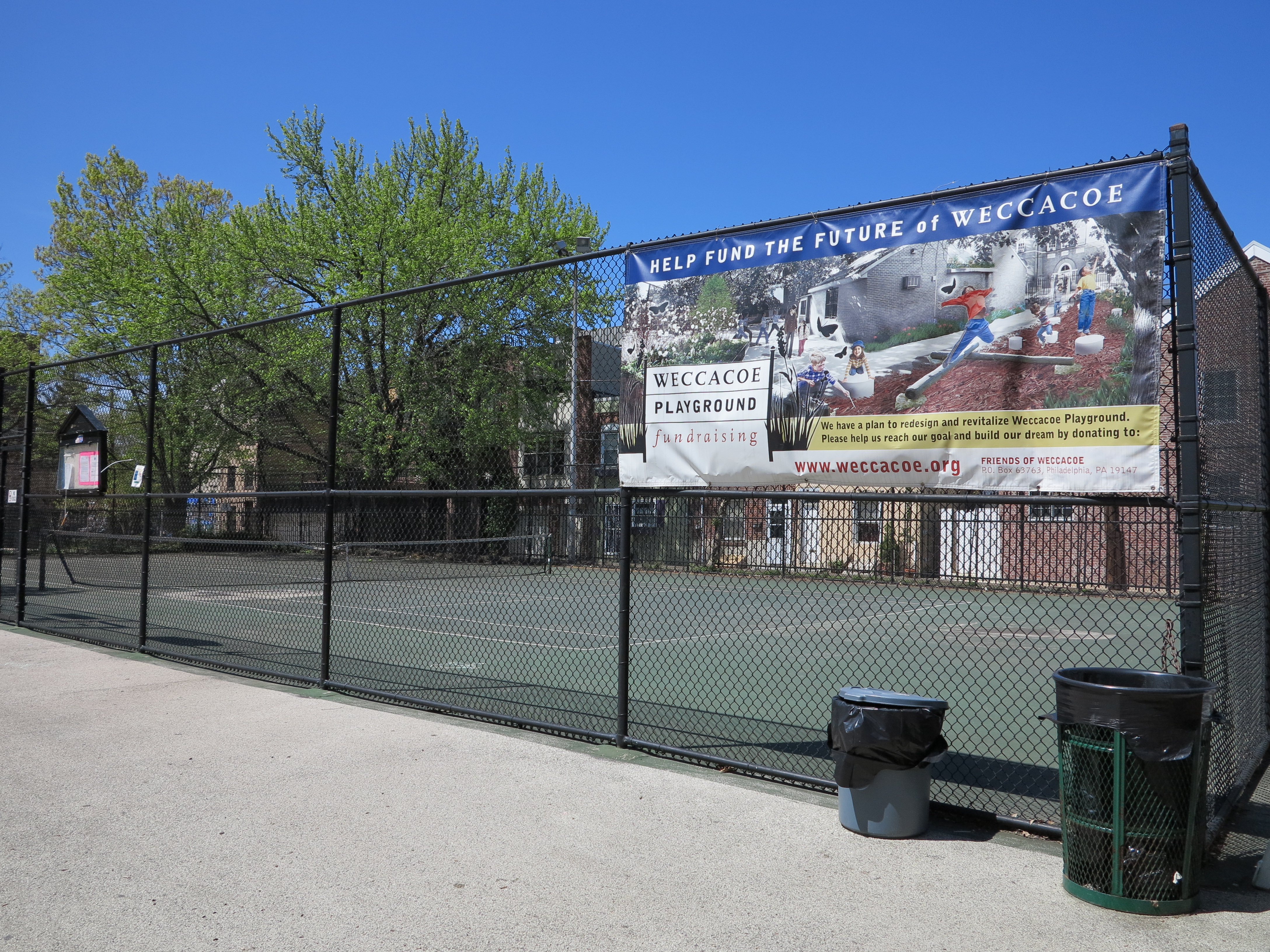
A meeting Monday evening marked the latest update about the fate of Weccacoe/Bethel Burial Ground. The auditorium of the African American Museum was standing room only, packed with neighbors of all ages and concerned Philadelphians. They were hoping for answers about next steps at the aging but active playground and the sensitive but significant burial ground beneath part of the site. Definitive big-picture answers, however, will have to wait.
Deputy Mayor Everett Gillison told the crowd that he has been directed by Mayor Michael Nutter to ensure there is the “maximum amount of community participation” around planning a new future for the site, and he urged their patience and engagement. His work is intended to keep people informed about every incremental step and to create opportunities for feedback, all in an attempt to find areas of common ground.
To show how seriously the city is taking this project and process, both Water Commissioner Howard Neukrug and First Deputy Commissioner of Parks & Facilities Mark Focht were on hand to deliver updates on two areas of concern: a really old pipe and a sinking mulch pile.
Neukrug said the Water Department (PWD) would be assessing a water main installed along Queen Street in the 1830s. If this aged pipe were to break and cause a flood there could be serious disturbance to the remains of the burial ground. Neukrug said PWD’s first hope is to “abandon the pipe in place.” To see if this is possible PWD will do a test shut-off of the pipe to see what houses it services. If the pipe is no longer in use it can simply be capped. Testing will happen in a couple of weeks and near neighbors are asked to stay tuned to help PWD determine the utility of this old infrastructure.
Parks and Recreation has been delivering mulch to a corner of Weccacoe for neighbors to use as they maintain plantings. That pile, however, sits on top of the burial ground and there is concern it is causing the ground to sink. That’s a problem because many of the remains are very close to the surface. Once the mulch heap can dry out more – all of our snow and rain haven’t helped this cause – Parks will bring in crews with very light equipment to remove the mulch. An archaeologist will monitor that process.
After those updates the crowd was invited to ask questions and offer comments about the site’s future. Some expressed a desire to fence off the sensitive burial ground zone entirely to honor the dead. Others sought an approach that balances commemorating history while making room for the living.
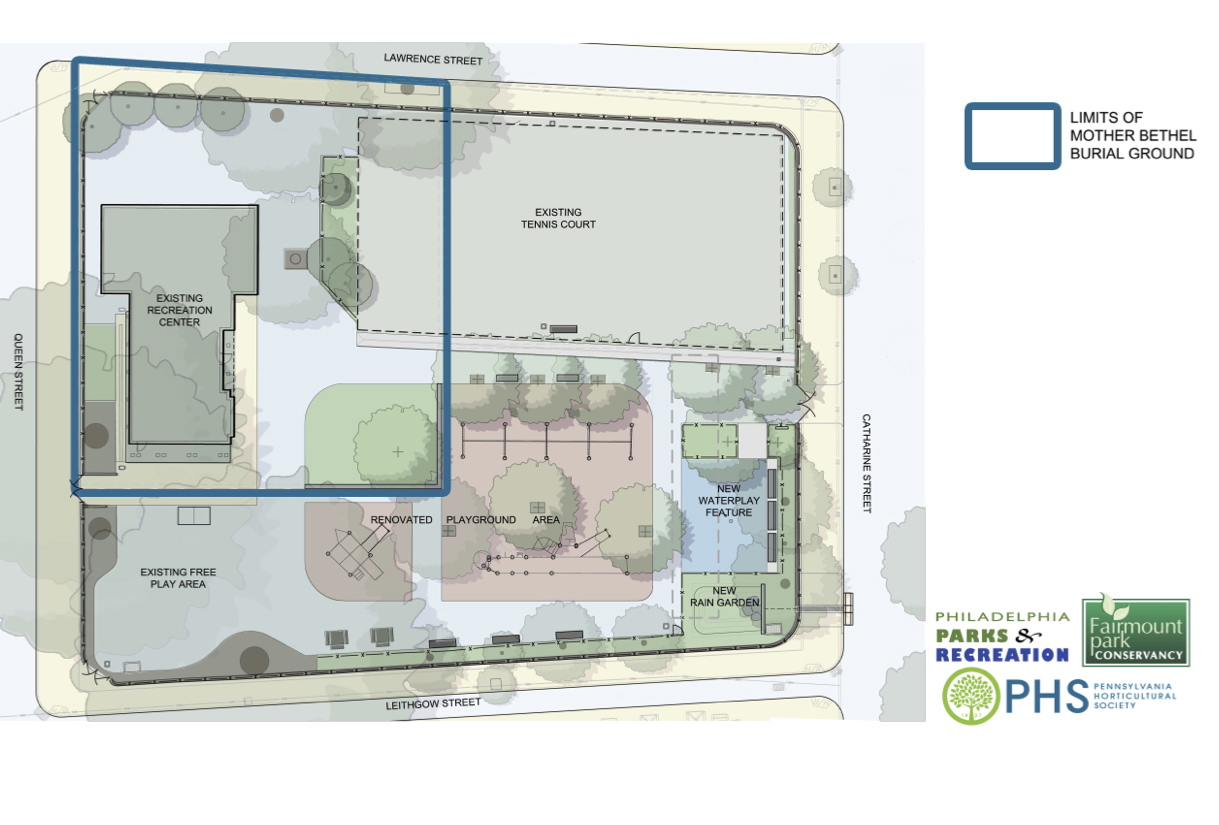
Jeff Hornstein, president of Queen Village Neighbors Association (QVNA) suggested that the majority of concerned parties weren’t that far apart in terms of goals: to honor the burial ground site with dignity, invite the public to enjoy Weccacoe, and arrive at a solution through an inclusive process.
One alternative might be to renovate the Weccacoe Recreation Center building, which sits atop the burial ground site, for use as a learning center that interprets the site’s history.
Mother Bethel AME’s pastor, the Rev. Mark Tyler, said that Mother Bethel and the descendent families, including those related to founder Bishop Richard Allen, see this project as an opportunity.
“The playground sits adjacent to the burial ground,” Tyler stressed. “In my opinion there is nothing more powerful than being able to… use that burial ground as a story for the children who come every day.”
Children spoke to their love of the playground and asked the city officials not to close Weccacoe. To that Gillison said very softly, “We’re not taking it away.”
Many said they see this as an chance to talk about the history of our city, to stimulate conversation about race, and foster understanding. There is real power in that potential.
As one woman put it: “Most of the young children were asking why. This is a teachable moment for them. So my word is compromise, compromise, compromise.”
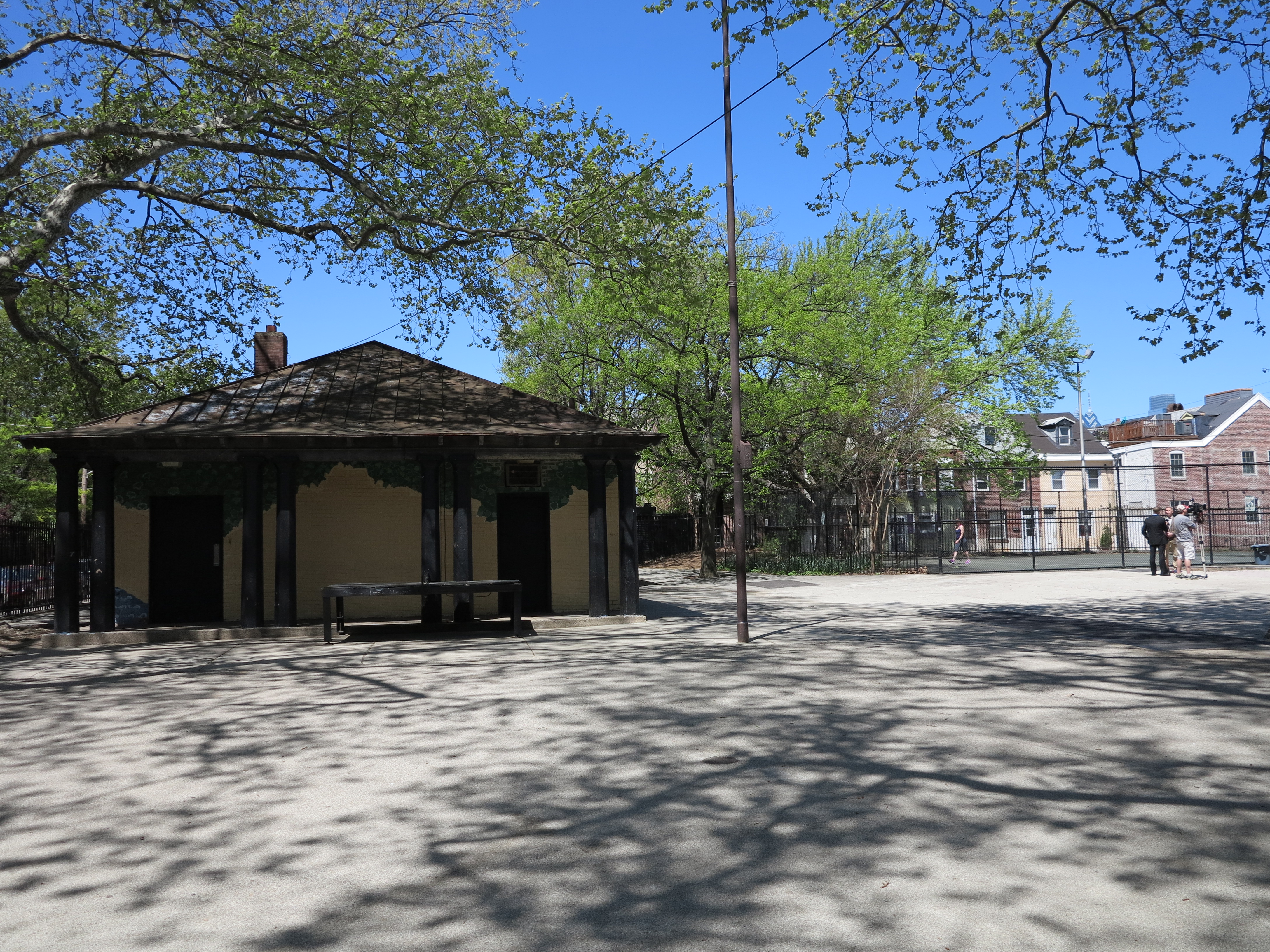
Many others see the property as a sacred space, since it is home to thousands of 19th century black Philadelphians. To honor and resepct their legacy a group called Friends of Bethel Burial Ground, not directly affiliated with Mother Bethel AME, says it wants to “stop activities” on top of the graves, cordon the burial ground area off, and have “proper commemoration.”
The burial ground lies below the southern third of Weccacoe Playground, along Queen Street, and accounts for about one quarter of an acre. That zone includes the recreation center building, part of the tennis court, and Lawrence Street sidewalk. This location was confirmed during archaeological investigations last summer.
The explorations found that the archaeological remains are as close to the surface as one to two feet, so it is a particularly sensitive site. That means that no lighting, no new buildings, or plantings should be installed in this area for fear of disturbing the historic burial ground just below the surface. The Philadelphia Historical Commission designated the burial ground site as historic last year, so any alterations would require the commission’s approval.
“This is a site of national significance, and I don’t think that’s really being heavily emphasized here,” said Christopher Barton, a scholar at Temple who specializes in the archaeology of the African Diaspora, adding that its story needs to be told.
WHYY is your source for fact-based, in-depth journalism and information. As a nonprofit organization, we rely on financial support from readers like you. Please give today.





